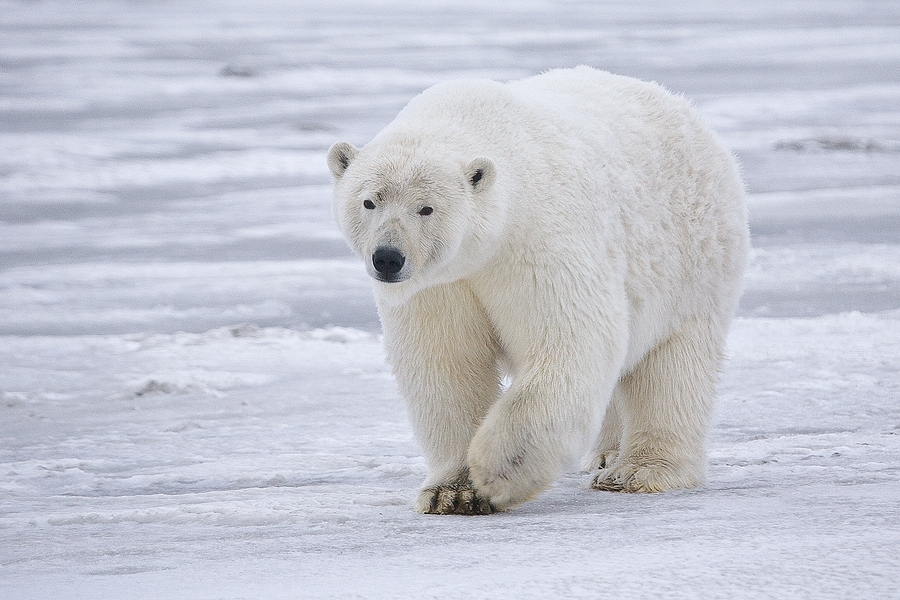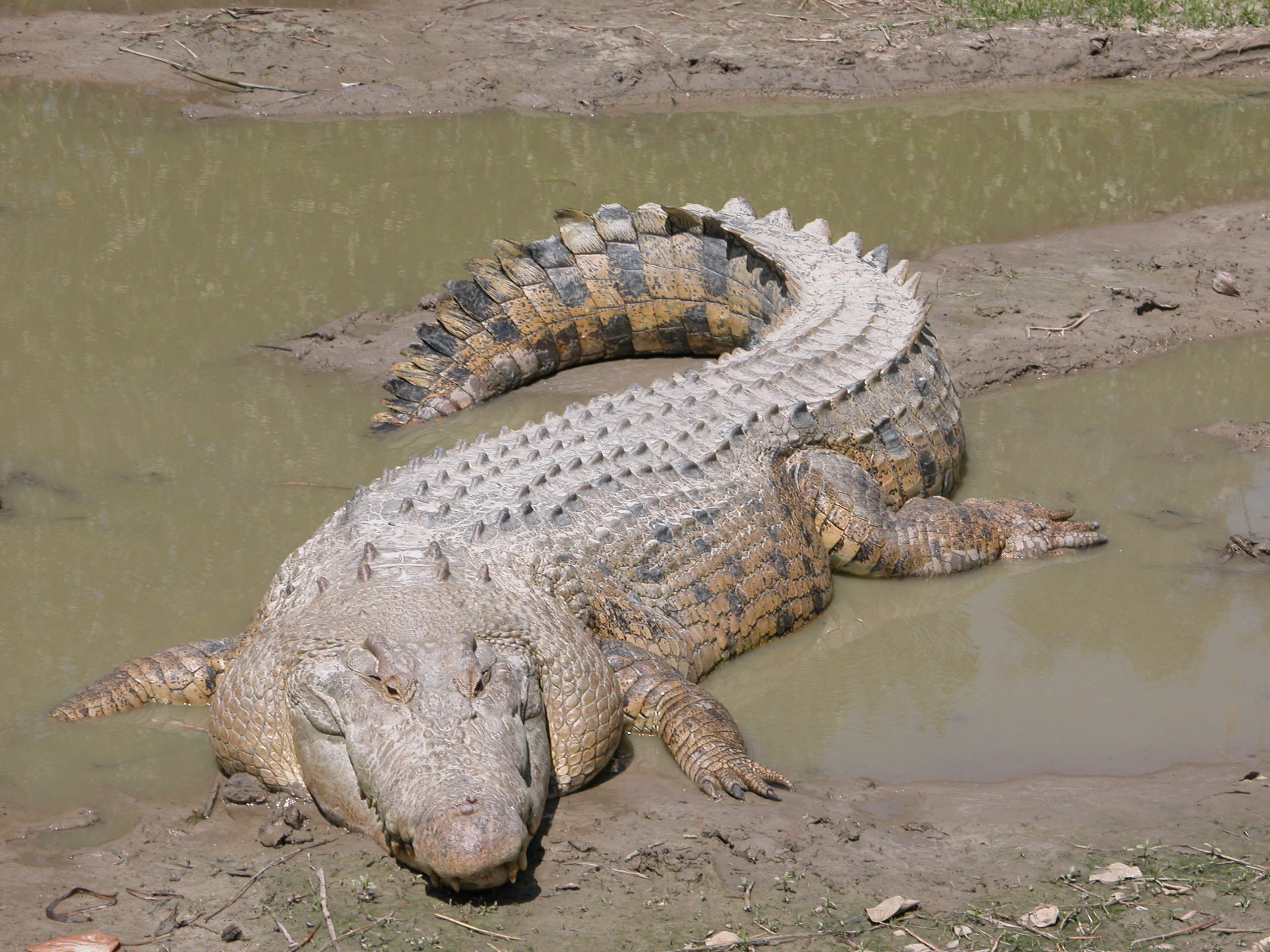Post by Infinity Blade on Jun 27, 2014 20:44:17 GMT 5
Polar Bear-Ursus maritimus
The polar bear (Ursus maritimus) is a carnivorous bear whose native range lies largely within the Arctic Circle, encompassing the Arctic Ocean, its surrounding seas and surrounding land masses. It is a large bear, approximately the same size as the omnivorous Kodiak bear (Ursus arctos middendorffi). A boar (adult male) weighs around 350–700 kg (770–1,540 lb), while a sow (adult female) is about half that size. Although it is the sister species of the brown bear, it has evolved to occupy a narrower ecological niche, with many body characteristics adapted for cold temperatures, for moving across snow, ice, and open water, and for hunting the seals which make up most of its diet. Although most polar bears are born on land, they spend most of their time at sea. Their scientific name means "maritime bear", and derives from this fact. Polar bears hunt their preferred food of seals from the edge of sea ice, often living off fat reserves when no sea ice is present. The polar bear is classified as a vulnerable species, with eight of the nineteen polar bear subpopulations in decline. For decades, large scale hunting raised international concern for the future of the species but populations rebounded after controls and quotas began to take effect. For thousands of years, the polar bear has been a key figure in the material, spiritual, and cultural life of Arctic indigenous peoples, and polar bears remain important in their cultures.

Saltwater Crocodile-Crocodylus porosus
The saltwater crocodile (Crocodylus porosus), also known as saltie, estuarine or Indo-Pacific crocodile, is the largest of all living reptiles, as well as the largest terrestrial and riparian predator in the world. The males of this species can reach sizes of up to 6.7 m (22 ft) and weigh as much as 2,000 kg (4,400 lb). However, an adult male saltwater crocodile is generally between 4.3 and 5.2 m (14 and 17 ft) in length and weighs 400–1,000 kg (880–2,200 lb), rarely growing larger. Females are much smaller and often do not surpass 3 m (9.8 ft). As its name implies, this crocodile can live in salt water, but usually resides in mangrove swamps, estuaries, deltas, lagoons, and lower stretches of rivers. They have the broadest distribution of any modern crocodile, ranging from the eastern coast of India, throughout most of Southeast Asia, stretching south to northern Australia, and historically ranging as far west as just beyond the eastern coast of Africa and as far east as waters off the coast of Japan. The saltwater crocodile is a formidable and opportunistic hypercarnivorous "apex" ambush predator capable of taking almost any animal that enters its territory, including fish, crustaceans, reptiles, birds and mammals, including other predators. Due to their size and distribution, saltwater crocodiles are the most dangerous extant crocodilian to humans.

Use a middle ground.

Credit goes to Vodmeister for the rough comparison above.
The polar bear (Ursus maritimus) is a carnivorous bear whose native range lies largely within the Arctic Circle, encompassing the Arctic Ocean, its surrounding seas and surrounding land masses. It is a large bear, approximately the same size as the omnivorous Kodiak bear (Ursus arctos middendorffi). A boar (adult male) weighs around 350–700 kg (770–1,540 lb), while a sow (adult female) is about half that size. Although it is the sister species of the brown bear, it has evolved to occupy a narrower ecological niche, with many body characteristics adapted for cold temperatures, for moving across snow, ice, and open water, and for hunting the seals which make up most of its diet. Although most polar bears are born on land, they spend most of their time at sea. Their scientific name means "maritime bear", and derives from this fact. Polar bears hunt their preferred food of seals from the edge of sea ice, often living off fat reserves when no sea ice is present. The polar bear is classified as a vulnerable species, with eight of the nineteen polar bear subpopulations in decline. For decades, large scale hunting raised international concern for the future of the species but populations rebounded after controls and quotas began to take effect. For thousands of years, the polar bear has been a key figure in the material, spiritual, and cultural life of Arctic indigenous peoples, and polar bears remain important in their cultures.

Saltwater Crocodile-Crocodylus porosus
The saltwater crocodile (Crocodylus porosus), also known as saltie, estuarine or Indo-Pacific crocodile, is the largest of all living reptiles, as well as the largest terrestrial and riparian predator in the world. The males of this species can reach sizes of up to 6.7 m (22 ft) and weigh as much as 2,000 kg (4,400 lb). However, an adult male saltwater crocodile is generally between 4.3 and 5.2 m (14 and 17 ft) in length and weighs 400–1,000 kg (880–2,200 lb), rarely growing larger. Females are much smaller and often do not surpass 3 m (9.8 ft). As its name implies, this crocodile can live in salt water, but usually resides in mangrove swamps, estuaries, deltas, lagoons, and lower stretches of rivers. They have the broadest distribution of any modern crocodile, ranging from the eastern coast of India, throughout most of Southeast Asia, stretching south to northern Australia, and historically ranging as far west as just beyond the eastern coast of Africa and as far east as waters off the coast of Japan. The saltwater crocodile is a formidable and opportunistic hypercarnivorous "apex" ambush predator capable of taking almost any animal that enters its territory, including fish, crustaceans, reptiles, birds and mammals, including other predators. Due to their size and distribution, saltwater crocodiles are the most dangerous extant crocodilian to humans.

Use a middle ground.

Credit goes to Vodmeister for the rough comparison above.













